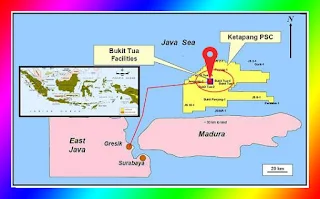PT Pertamina (Persero) states that one of the sub holdings prepared to be offered to the public is upstream sub-holding which is operated by PT Pertamina Hulu Energi (PHE). This strategy is to increase the company's oil and gas production to be better.
Pertamina President Director Nicke Widyawati said, in managing oil and gas blocks, the company usually also partners with other companies. The reason is, by working with other companies, oil and gas production can be more optimal.
In fact, to work on the Rokan Block, the government requires Pertamina to partner with other companies. This is also the basis for the company to prepare upstream sub-holding for the IPO.
"The first thing we will see [for IPO] is upstream sub-holding," said Nicke Widyawati.
Nicke Widyawati explained, many of the company's upstream assets still have the potential to be developed. However, the development of oil and gas blocks requires huge funding. In the future, around 60% of the company's total budget will be used to fund the upstream oil and gas project.
"So, later the funds obtained from the IPO will be used for upstream investment," Nicke said.
Upstream oil and gas investment, called Nicke Widyawati, is not limited to the upstream oil and gas assets owned by the company. Funds from the IPO will also be used to add new upstream oil and gas assets.
"Our IPO will use the funds for the upstream acquisition," said Nicke Widyawati.
At the end of last year, the company had budgeted funds for the acquisition of oil and gas blocks of US $ 150 million this year. Although it is not yet certain which block is targeted, the company is eyeing assets in Africa and the Middle East.
Energy observers from Trisakti University Pri Agung Rakhmanto rate, the IPO step is very good to improve corporate governance, because it must be more open. IPO is also good to be able to raise funds from third parties (public).
"For Pertamina's upstream, which does require strengthening funds for investment, this is positive. When it comes to performance, that's another thing, it also depends on how to run the company, "he said.
Regarding Article 33 of the 1945 Constitution which states that production branches which are important for the State and which control the lives of many people are controlled by the State, according to him, it does not become an issue if the IPO does not relinquish the majority of share ownership.
"As long as the majority shares are still in the country, in my opinion, more positive," said Pri Agung.
He added Pertamina was not the first oil and gas BUMN to be listed on the exchange. At present, there are already many other state-owned oil and gas companies listed on the stock exchange, such as Petrobras which is a Brazilian oil and gas BUMN, Petronas Malaysia, YPF Argentina, Statoil Norway, and Saudi Aramco Saudi Arabia.
Management of Oil and Gas Blocks
In addition to the IPO plan, Pertamina is also restructuring its oil and gas block management. Nicke explained, after the sub-holding was formed, the management of the oil and gas block would be done by region. Previously, despite being in one area, the management of the oil and gas block was carried out by a different subsidiary. For example in Sumatra, there are oil and gas blocks managed by PHE and PT Pertamina EP.
"We think this should be managed in synergy and coordination, so there can be efficiency. For this reason, under the sub-holding [oil and gas block] is managed in a way regionalization, "explained Nicke Widyawati.
In this way, all resources and equipment procurement can be synergized. All this time due to being separate, procurement of tools such as rigs has become difficult and long. This is because among subsidiaries scrambling to find rigs, while the number of rigs in the market is limited.
Other parties are also reluctant to increase the number of rigs because the company's procurement contracts tend to be short-term. These problems have become one of the causes of exploration and achievement of upstream oil and gas production below the target.
"This is how we manage all assets more efficiently and at the same time, improve our products and services," said Nicke.
It also wants to encourage investment in rig procurement in the country. Under the upstream sub-holding, there are several subsidiaries that will work on Pertamina's oil and gas blocks in certain areas.
Precisely, Pertamina EP will manage the company's oil and gas block in Java, PT Pertamina Hulu Indonesia will work on upstream oil and gas assets in Kalimantan, Pertamina EP Cepu (PEPC) will handle oil and gas working areas in Eastern Indonesia, and PT Pertamina International EP continues to manage oil and gas blocks outside the country.
Head of the Special Task Force for Upstream Oil and Gas Business Activities (SKK Migas) Dwi Seotjipto said, his party would see Pertamina's explanation of organizational changes in upstream sub-holding, mainly related to the authority of each operator in Pertamina's oil and gas block. The reason is that the Production Sharing Contract / PSC signed by the government is the company that is the operator.
Blogger Agus Purnomo in SKK Migas
"With the sub-holding, we will later see its authority in investment as well as the implementation and operation of the oil and gas block concerned," Dwi Seotjipto said.
Regarding the implementation of the contract, this depends on the bureaucracy established by Pertamina in the presence of this sub-holding. If the bureaucracy and decision-making are simpler, and the authority of the oil and gas block operator can be supported, there will be no problems.
"Hopefully it is better, the important thing is that the bureaucracy is not long, so the investment step is faster," Dwi said.
Investor Daily, Page-10, Tuesday, June 16, 2020















































